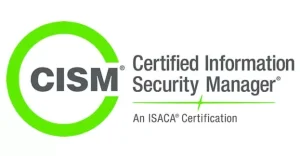Windows Error Code 0x80070570 is a common issue faced by users, indicating corruption or missing files within the operating system. Understanding its origins is crucial for effective resolution.
Causes of Error Code 0x80070570
The error may stem from various sources, such as:
- Corrupted System Files: File corruption within the OS causing conflicts.
- Hardware Issues: Faulty hardware components triggering errors.
- Software Conflict: Incompatible or outdated software causing disruptions.
- Incomplete Installations: Failed or partial software installations leading to errors.
Identifying Symptoms
Recognizing the manifestations of this error is essential:
- Error Pop-ups: System prompts displaying the specific error code.
- System Freezes or Crashes: Unresponsive behavior or sudden system shutdowns.
- Installation Failures: Difficulty installing or updating software.
Initial Troubleshooting Steps
Restart Your Device
A simple restart often resolves transient issues like Error Code 0x80070570.
Restarting your device is a simple yet effective way to resolve many issues, including Error Code 0x80070570. It helps in clearing temporary glitches and reinitializing system processes, often fixing the error without any further steps. To restart your device:
- Save Your Work: Ensure all your ongoing work is saved to prevent any data loss.
- Click on Start: Navigate to the Start menu.
- Select Power: Choose the Power option.
- Click Restart: Select “Restart” from the available options.
Once your device restarts, check if the error persists. In many cases, this quick action can resolve the issue, allowing you to resume your tasks without any interruptions.
Check External Connections
Ensure all external devices are properly connected and functioning.
Verifying external connections is a crucial step in troubleshooting Error Code 0x80070570. Faulty or loose connections can often lead to errors. Here’s how to check them:
- Inspect Cables: Ensure all cables connecting external devices (like USB drives, printers, or external hard drives) to your computer are securely plugged in.
- Examine Ports: Check the ports on your computer for any damage or debris that might hinder proper connection.
- Test Devices: If possible, test the external devices on another computer to confirm if they are functioning correctly.
- Restart Devices: Sometimes, restarting both your computer and the external devices can establish a proper connection.
After checking and securing the external connections, verify if the error persists. Often, ensuring proper connections resolves Error Code 0x80070570, allowing smooth functionality of your devices.
Checking Hardware

Verifying Hardware Components
Inspect hardware components like RAM, hard drive, and connections for faults.
Ensuring your hardware components are in optimal condition is essential when troubleshooting Error Code 0x80070570. Here’s how to verify these components:
- RAM Inspection: Check your computer’s RAM modules. Ensure they are properly seated in their slots without any signs of damage.
- Hard Drive Health: Use diagnostic tools to check the health of your hard drive for any potential issues or errors.
- Peripheral Devices: Inspect other hardware components like graphics cards, sound cards, or any additional hardware installed in your system.
- Power Supply: Ensure a stable power supply to your system. Check cables and connections for any loose ends or damage.
- Cooling System: Verify that the system’s cooling system (fans, heat sinks) is functioning correctly to prevent overheating.
By carefully examining and ensuring the integrity of these hardware components, you can eliminate potential hardware-related causes of Error Code 0x80070570, leading to smoother system operations.
Resolve Software-Related Issues
System File Checker (SFC)
Utilize the SFC tool to scan and repair corrupted system files.
The System File Checker (SFC) tool is a valuable resource in resolving Error Code 0x80070570 by verifying and repairing corrupted system files. Here’s how to use it:
- Open Command Prompt: Right-click on the Start menu and select “Command Prompt (Admin)” to open it with administrative privileges.
- Run SFC Scan: Type
sfc /scannowinto the Command Prompt and press Enter. This initiates the scan. - Wait for Completion: Allow the scan to finish. It might take some time depending on your system’s speed.
- Review Results: Once completed, the tool will provide a report on any repaired or corrupted files.
- Restart Your System: After the scan finishes, restart your computer to implement the changes.
The SFC tool attempts to repair corrupted system files, potentially resolving Error Code 0x80070570 caused by file corruption within the operating system.
Disk Cleanup
Clear redundant files and temporary data to optimize system performance.
Performing a disk cleanup is a beneficial step in addressing Error Code 0x80070570, as it helps remove unnecessary files and optimize system performance. Here’s how to do it:
- Open Disk Cleanup: Go to the Start menu, search for “Disk Cleanup,” and select the corresponding option from the results.
- Choose Drive: Select the drive you want to clean. Usually, it’s the C: drive, where your operating system is installed.
- Scan for Files: The tool will scan your selected drive for unnecessary files that can be safely deleted.
- Select File Types: Choose the types of files you want to clean. Temporary files, Recycle Bin contents, and system cache are common options.
- Initiate Cleanup: Click on “OK” or “Clean up system files” to start the cleanup process.
- Confirm Deletion: Confirm your action if prompted. Disk Cleanup will then delete the selected files.
By running Disk Cleanup, you can free up disk space and potentially resolve Error Code 0x80070570, especially if the error is caused by cluttered or unnecessary files on your system.
Updating Drivers
Ensure device drivers are up-to-date to prevent compatibility issues.
- Device Manager: Right-click on the Start menu and select “Device Manager.”
- Expand Categories: Look for the category related to the device you want to update. For instance, “Display adapters” for graphics cards.
- Update Driver: Right-click on the device and select “Update driver.”
- Automatic Search: Choose “Search automatically for updated driver software.” Windows will scan and install any available updates.
- Manual Update: Alternatively, you can visit the manufacturer’s website, download the latest drivers for your device, and manually install them.
- Restart System: After updating drivers, restart your system to ensure the changes take effect.
Run Windows Update
Install available updates to patch system vulnerabilities and bugs.
Running Windows Update is a crucial step in addressing Error Code 0x80070570 as it ensures your system has the latest patches, bug fixes, and enhancements from Microsoft. Here’s how to do it:
- Open Settings: Click on the Start menu and select “Settings” (the gear icon).
- Update & Security: In the Settings window, choose “Update & Security.”
- Check for Updates: Click on “Windows Update” in the left sidebar, then click “Check for updates.”
- Download and Install: If updates are available, Windows will begin downloading and installing them. This process may take some time based on the size and number of updates.
- Restart When Prompted: After the updates are installed, you might need to restart your computer to complete the process.
Registry Fixes

Tackling Registry Issues
Address registry-related problems using trusted software tools.
Addressing registry issues is vital in troubleshooting Error Code 0x80070570, as registry errors can lead to system instability. Here’s a cautious approach to handle these concerns:
- Backup Registry: Before making any changes, back up your registry. Open the Registry Editor by typing “regedit” in the Start menu search and select “Run as administrator.” Then, click on “File” > “Export” to create a backup.
- Identify Problematic Entries: Navigate through the registry editor cautiously. Look for suspicious or corrupted entries related to Error Code 0x80070570.
- Modification or Deletion: Exercise extreme caution while modifying or deleting registry entries. Altering the wrong keys can cause severe system issues.
- Third-Party Tools: Consider using trusted third-party registry repair tools if you’re uncomfortable manually editing the registry. These tools often scan for errors and provide a safer way to fix registry issues.
- Restart System: After making changes or repairs to the registry, restart your computer to ensure the changes take effect.
Disable Security Software
Temporarily disable antivirus or firewall programs for troubleshooting purposes.
Temporarily disabling your security software can aid in troubleshooting Error Code 0x80070570, as sometimes these programs can conflict with system operations. Here’s how to disable them:
- Antivirus Software: Locate the icon of your antivirus program in the system tray (bottom-right corner). Right-click on it and look for an option like “Disable,” “Pause,” or “Turn Off.”
- Firewall Settings: If using a separate firewall, open its settings through the Control Panel or its dedicated application. Look for an option to temporarily disable it.
- Confirmation: The software might prompt for confirmation or ask the duration for which you want to disable it. Select the appropriate option, usually for a short period, such as 15 minutes or an hour.
- Remember to Re-enable: After troubleshooting or performing the necessary tasks, remember to re-enable your security software to ensure ongoing protection.
Seeking Professional Assistance
Data Recovery Solutions
Recover lost or corrupted data with appropriate recovery tools.
When encountering Error Code 0x80070570, data loss might occur. Employing data recovery solutions can assist in retrieving lost or corrupted files. Here are steps to consider:
- Data Recovery Software: Utilize reputable data recovery software available in the market. Several trusted applications offer file recovery features.
- Scan for Lost Data: Launch the data recovery tool and perform a deep scan on the affected drive or location to search for lost or damaged files.
- Preview and Recover: Once the scan completes, the software typically presents a list of recoverable files. Preview these files, select the ones you wish to recover, and proceed with the recovery process.
- Save Recovered Data: Choose a safe and separate location to store the recovered files. Avoid saving them back onto the same drive where data loss occurred.
- Seek Professional Help: If the DIY recovery process is unsuccessful or if the data is critical, consider consulting professional data recovery services.
Expert Help
Seek guidance from professional forums or certified technicians.
FAQs
What is Error Code 0x80070570?
Error 0x80070570 signals file corruption or missing files within the Windows OS.
Can a Restart Resolve This Error?
Yes, a simple system restart might clear the error temporarily.
How Important Are Driver Updates?
Regular driver updates are crucial to prevent compatibility issues and errors.
Is Disabling Security Software Safe?
Temporarily disabling security software is safe for troubleshooting purposes.
Can Registry Fixes Cause Harm?
Registry fixes, if done incorrectly, can lead to system instability. Hence, caution is advised.
When to Seek Professional Help?
Professional assistance is recommended for persistent or complex error scenarios.
Conclusion
Resolving Windows Error Code 0x80070570 demands patience and a systematic approach. By following these troubleshooting steps and understanding the nuances of this error, users can effectively mitigate its impact. Remember, seeking professional guidance when needed ensures a smoother resolution process.


![How To Fix Windows Error Code 0x80070570 [2024]](https://technoajeet.net/wp-content/uploads/2023/11/hqdefault-2.jpg)






